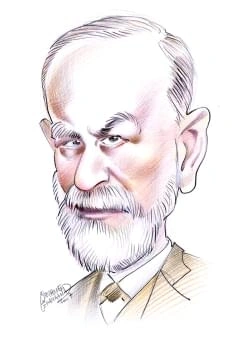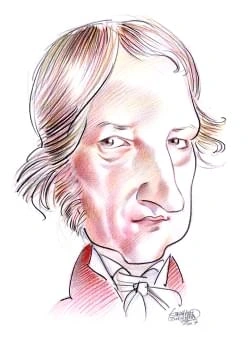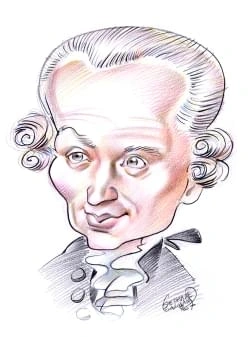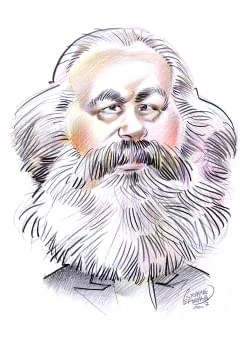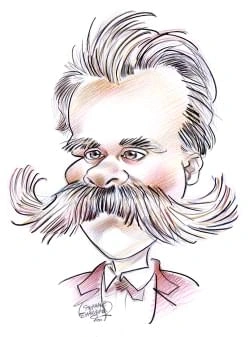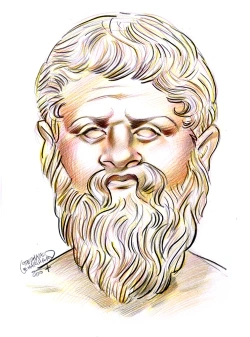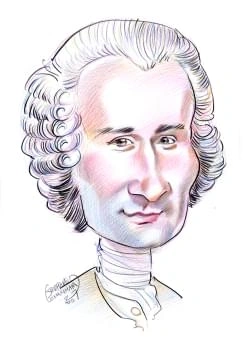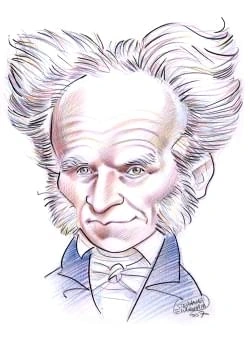548 résultats pour "what"
-
Ontario - Canadian History.
governed Ontario’s initial settlement and development. The province’s most important river is the St. Lawrence. Its route was much improved and enlarged by dredgingand canal building in the mid-20th century. This enabled large ocean-going vessels to reach Great Lake ports ( see St. Lawrence Seaway). The Ottawa River was an important early route to the interior for fur traders and timber merchants. The Niagara River, because of its falls, is a great center of hydroelectric power as well as aninte...
-
Louis Stephen St.
St. Laurent brought to office a new concept of government. His broad, all-national view firmly rejected Québec's traditional isolationism. He made his decisions with coolimpartiality, giving first consideration to the welfare of Canada as a whole. St. Laurent's foreign policy involved Canada in world politics. He supported the UN, fully endorsing the initiatives proposed by Pearson, his representative there. St.Laurent actively sponsored and subsequently cooperated with the North Atlantic Treaty...
-
Louis Stephen St.
St. Laurent brought to office a new concept of government. His broad, all-national view firmly rejected Québec's traditional isolationism. He made his decisions with coolimpartiality, giving first consideration to the welfare of Canada as a whole. St. Laurent's foreign policy involved Canada in world politics. He supported the UN, fully endorsing the initiatives proposed by Pearson, his representative there. St.Laurent actively sponsored and subsequently cooperated with the North Atlantic Treaty...
-
Warsaw - geography.
VI ECONOMY In addition to serving as Poland's leading administrative center, Warsaw is also a center for science, research, and higher education. Since World War II the city'sindustrial base has been developed, with diverse plants producing steel, cars, tractors, and consumer electronics. Warsaw is the second most important industrial regionin Poland (after Katowice in the south). Warsaw, more than anywhere else in the country, has benefited from the boom in construction and commerce that foll...
-
Uranus (planet) - astronomy.
V COMPOSITION AND STRUCTURE A Interior of Uranus Uranus contains mostly rock and water, with hydrogen and helium (and trace amounts of methane) in its dense atmosphere. Astronomers believe that Uranus, likeNeptune, formed from the same material—principally frozen water and rock—that composes most of the planet’s moons. As the planet grew, pressures andtemperatures in the planet’s interior increased, heating the planet’s frozen water into a hot liquid. Uranus probably has a relatively small roc...
-
Western Philosophy.
the popular belief in personal deities, but he failed to explain the way in which the familiar objects of experience could develop out of elements that are totally differentfrom them. Anaxagoras therefore suggested that all things are composed of very small particles, or “seeds,” which exist in infinite variety. To explain the way in whichthese particles combine to form the objects that constitute the familiar world, Anaxagoras developed a theory of cosmic evolution. He maintained that the activ...
-
Feudalism
I
INTRODUCTION
Feudalism, contractual system of political and military relationships existing among members of the nobility in Western Europe during the High Middle Ages.
lord”; thus, it was not rebellion for a subvassal to fight against his lord’s lord. In England, however, William the Conqueror and his successors required their vassals’vassals to take oaths of fealty to them. B Duties of a Vassal Military service in the field was basic to feudalism, but it was far from all that the vassal owed to his lord. When the lord had a castle, he might require his vassals togarrison it, a service called castle-guard. The lord also expected his vassals to attend his cour...
-
Nebraska - geography.
by natural resource districts to limit the rate of pumping for irrigation. C Climate Nebraska has a typical continental climate with wide seasonal variations in temperature. C1 Temperature Winter temperatures below -20°C (0° F) and summer temperatures in the upper 30°s C (lower 100°s F) are common. The average January temperature varies from about -7° C (about 20° F) in the northeast to about -2° C (about 29° F) in the southwest. The average for July, thehottest month, ranges from about 26° C...
-
-
Nebraska - USA History.
by natural resource districts to limit the rate of pumping for irrigation. C Climate Nebraska has a typical continental climate with wide seasonal variations in temperature. C1 Temperature Winter temperatures below -20°C (0° F) and summer temperatures in the upper 30°s C (lower 100°s F) are common. The average January temperature varies from about -7° C (about 20° F) in the northeast to about -2° C (about 29° F) in the southwest. The average for July, thehottest month, ranges from about 26° C...
-
Kansas - geography.
at the adjoining cities of Kansas City, Kansas, and Kansas City, Missouri. Its chief headstreams are the Republican and Smoky Hill rivers, which join to form the KansasRiver at Junction City. Each of the headstreams has numerous tributaries. The Kansas River proper is only 270 km (170 mi) long, but the Smoky Hill River has a lengthof 870 km (540 mi), and the Republican River has a length of 720 km (450 mi). The main tributary flowing into the Kansas River is the Big Blue River. The Arkansas Rive...
-
Kansas - USA History.
at the adjoining cities of Kansas City, Kansas, and Kansas City, Missouri. Its chief headstreams are the Republican and Smoky Hill rivers, which join to form the KansasRiver at Junction City. Each of the headstreams has numerous tributaries. The Kansas River proper is only 270 km (170 mi) long, but the Smoky Hill River has a lengthof 870 km (540 mi), and the Republican River has a length of 720 km (450 mi). The main tributary flowing into the Kansas River is the Big Blue River. The Arkansas Rive...
-
World War I .
and troops to Europe from the United States and other overseas sources. In 1914 Britain implemented a sea blockade of Germany to prevent the delivery of importssuch as food and war materials. The same year, Germany began using submarines to disrupt Allied seaborne traffic and prevent supplies from reaching Britain. In 1915Germany instituted a submarine blockade around Britain. From February 1915 to September 1915 and again in 1917, Germany used unrestricted submarine warfare,sinking ships withou...
-
Biodiversity.
a common molecule, ribonucleic acid (RNA), and most also have deoxyribonucleic acid (DNA). These molecules direct the production of proteins—molecules responsiblefor the structure and function of virtually all living cells. This is the evolutionary chain of life. All species are descended from a single common ancestor. From that ancient single-celled microbe, all inherited RNA. As time goesby, species diverge and develop their own peculiar attributes, thus making their own contribution to biodiv...
-
Biodiversity - biology.
a common molecule, ribonucleic acid (RNA), and most also have deoxyribonucleic acid (DNA). These molecules direct the production of proteins—molecules responsiblefor the structure and function of virtually all living cells. This is the evolutionary chain of life. All species are descended from a single common ancestor. From that ancient single-celled microbe, all inherited RNA. As time goesby, species diverge and develop their own peculiar attributes, thus making their own contribution to biodiv...
-
Wolfgang Amadeus Mozart.
including the sacred style of church music and the so-called galant (courtly) idiom. The elegant though often superficial galant style dominated much instrumental music of the 1760s and 1770s. Mozart’s mastery often demonstrates itself in an ability to expand and deepen the stylistic possibilities of the time. The manner in which heextended the character and form of the concerto, for instance, owes much to his experience in writing operatic arias. A Musical Expressiveness In the masterful Je...
-
Pittsburgh - geography.
College of Allegheny County (1966), with branches in the city and suburbs. Pittsburgh has many outstanding cultural institutions. The Oakland district is where Carnegie Mellon University and the University of Pittsburgh are located. The CarnegieMuseums of Pittsburgh include The Carnegie Museum of Art (including the Scaife Galleries), which holds a distinguished motion-picture and video collection and a uniquestudy of architecture; the Carnegie Museum of Natural History, which displays an extensi...
-
-
Stress (psychology).
blood flow is diverted from the internal organs and skin to the brain and muscles. Breathing speeds up, the pupils dilate, and perspiration increases. This reaction issometimes called the fight-or-flight response because it energizes the body to either confront or flee from a threat. Another part of the stress response involves the hypothalamus and the pituitary gland, parts of the brain that are important in regulating hormones and many otherbodily functions. In times of stress, the hypothal...
-
Iran-Iraq War - History.
The Iranian offensives of 1982 set a pattern that continued for the rest of the war. Exploiting their superiority in numbers, Iran sent its Revolutionary Guard on theattack, supported by regular military forces. Outnumbered Iraqi forces inflicted heavy losses on the Iranians but ultimately fell back. As soon as the initial Iranian thrusthad exhausted itself, however, the Iraqi army exploited Iranian disorganization and lack of equipment to retake much of the lost territory. As the war continued,...
-
India - country.
delta in the north, are intensely farmed. B Rivers and Lakes The rivers of India can be divided into three groups: the great Himalayan rivers of the north, the westward-flowing rivers of central India, and the eastward-flowingrivers of the Deccan Plateau and the rest of peninsular India. Only small portions of India’s rivers are navigable because of silting and the wide seasonal variation inwater flow (due to the monsoon climate). Water transport is thus of little importance in India. Barrages,...
-
Aztec Empire.
tribute to the empire in agricultural products, which were used to finance public projects. All able-bodied men owed military service to the empire. Citizens could also bedrafted to work on public lands or build temples, dikes, aqueducts, and roads. Although Aztec society had strict classes, a person’s status could change based on his or her contribution to society. Commoners could improve their rank, especially byperforming well in battle, and become prosperous landowners. Young people of some...
-
Aztec Empire - USA History.
tribute to the empire in agricultural products, which were used to finance public projects. All able-bodied men owed military service to the empire. Citizens could also bedrafted to work on public lands or build temples, dikes, aqueducts, and roads. Although Aztec society had strict classes, a person’s status could change based on his or her contribution to society. Commoners could improve their rank, especially byperforming well in battle, and become prosperous landowners. Young people of some...
-
Primate - biology.
The primate order includes a handful of species that live entirely on meat (carnivores) and also a few that are strict vegetarians (herbivores), but it is composed chieflyof animals that have varied diets (omnivores). The carnivorous primates are the four species of tarsiers, which live in Southeast Asia. Using their long back legs, thesepocket-sized nocturnal hunters leap on their prey, pinning it down with their hands and then killing it with their needle-sharp teeth. Tarsiers primarily eat in...
-
Paul Martin.
VI CONFLICT WITH THE PRIME MINISTER Martin’s success could not have been achieved without the support he received from Jean Chrétien. Yet relations between the two men continued to deteriorate. In partthis was because of their continuing disagreement about how best to deal with the separatist challenge in Québec. In the 1993 election, a majority of Québec seats hadgone to the Bloc Québécois, and in 1994 the provincial separatist party, the Parti Québécois, won election on a platform promising...
-
Paul Martin - Canadian History.
VI CONFLICT WITH THE PRIME MINISTER Martin’s success could not have been achieved without the support he received from Jean Chrétien. Yet relations between the two men continued to deteriorate. In partthis was because of their continuing disagreement about how best to deal with the separatist challenge in Québec. In the 1993 election, a majority of Québec seats hadgone to the Bloc Québécois, and in 1994 the provincial separatist party, the Parti Québécois, won election on a platform promising...
-
-
Pablo Picasso.
Color juxtapositions—between blue and orange, for instance—are intentionally strident and unharmonious. The representation of space is fragmented and discontinuous. While the left side of the canvas is largely Iberian-influenced, the right side is inspired by African masks, especially in its striped patterns and oval forms. Suchborrowings, which led to great simplification, distortion, and visual incongruities, were considered extremely daring in 1907. The head of the figure at the bottom right,...
-
Alcoholism.
Although a consensus is growing among health professionals that alcohol dependence is a disease, society’s attitudes toward individuals with drinking problems remainambivalent and confused. Until the mid-20th century, the typical picture of the alcoholic was of someone without steady employment, unable to sustain familyrelationships and most likely in desperate financial straits. But this stereotype was largely dispelled when highly respected people publicly admitted their alcoholdependence and...
-
Electoral College.
III HISTORY OF THE ELECTORAL COLLEGE A Origins One thing is clear about the political theory underpinning the electoral college: The framers of the Constitution could not agree on one. From the outset, the framerswere uncertain about how the president should be chosen. Meeting in the Constitutional Convention in Philadelphia, Pennsylvania, in 1787, the framers originally decidedto have Congress choose the president, and that there should be no popular vote to elect the president. Then the Con...
-
Rain Forest.
dropped into the heart of the forest by helicopters. Suspended from the crane’s long, movable arm is a large gondola that functions as a mobile treetop laboratory.Moving from tree to tree, forest researchers collect specimens, conduct experiments, and observe life in the canopy frontier. The highest stratum of the rain forest is made up of the emergent trees, those individuals that stick up above the forest canopy. Emergents, which do not form acontinuous layer, are usually the giants of the for...
-
Dinosaur - biology.
The behavior of dinosaurs was governed by their metabolism and by their central nervous system. The dinosaurs’ metabolism—the internal activities that supply thebody’s energy needs—affected their activity level. It is unclear whether dinosaurs were purely endothermic (warm-blooded), like modern mammals, or ectothermic (cold-blooded), like modern reptiles. Endotherms regulate their body temperature internally by means of their metabolism, rather than by using the temperature oftheir surroundin...
-
Martin Van Buren.
political ambitions. The Clintonians cited as one example of Van Buren's unscrupulous methods his support of a convention in 1821 to revise the state's constitution. Van Buren and hisBucktails said they wanted to make the constitution more democratic. The Clintonians retorted that the real aim was to oust them from office. Both sides were right. Therevised constitution introduced a needed extension of voting rights and improved the operation of the state government. However, it also removed many...
-
Martin Van Buren
political ambitions. The Clintonians cited as one example of Van Buren's unscrupulous methods his support of a convention in 1821 to revise the state's constitution. Van Buren and hisBucktails said they wanted to make the constitution more democratic. The Clintonians retorted that the real aim was to oust them from office. Both sides were right. Therevised constitution introduced a needed extension of voting rights and improved the operation of the state government. However, it also removed many...
-
Blacks in Latin America.
Throughout Latin America and the Caribbean the slave population declined at the astonishing rate of 2 to 4 percent a year; thus, by the time slavery was abolished, theoverall slave population in many places was far less than the total number of slaves imported. The British colony of Jamaica, for example, imported more than 600,000slaves during the 18th century; yet, in 1838, the slave population numbered little more than 300,000. The French colony of Saint-Domingue (present-day Haiti)imported mo...
-
-
Canadian Literature
I
INTRODUCTION
Canadian Literature, literature of the peoples of Canada.
William Henry DrummondPoet William Henry Drummond described the lives of French Canadian farmers, loggers, and rural workers in verse thatreflected their mix of French and English speech. He gained recognition in the late 19th and early 20th centuries.Library of Congress In the early 19th century, most Canadian poetry imitated earlier British poetry. Poets Oliver Goldsmith (grandnephew of the Anglo-Irish writer of the same name),Charles Sangster, Charles Mair, and Levi Adams exemplified literary...
-
Global Warming.
some of the warming influence of increasing greenhouse gases. A1 Carbon Dioxide Carbon dioxide is the second most abundant greenhouse gas, after water vapor. Carbon dioxide constantly circulates in the environment through a variety of naturalprocesses known as the carbon cycle. It is released into the atmosphere from natural processes such as eruptions of volcanoes; the respiration of animals, whichbreathe in oxygen and exhale carbon dioxide; and the burning or decay of plants and other organic...
-
Oklahoma - geography.
portion and the Panhandle are classified as a steppe, where precipitation, typically 250 to 500 mm (10 to 20 in), is the controlling characteristic. January is usually the coldest month with an average of about 3°C (38°F) and extremes from -33°C (-27°F), the lowest ever recorded, to 33°C (92°F). Summer arelong and hot with temperatures in the upper 30°s C (lower 100°s F) common from May until September across the state. The growing season varies from less than 180days in the western Panhandle to...
-
Oklahoma - USA History.
portion and the Panhandle are classified as a steppe, where precipitation, typically 250 to 500 mm (10 to 20 in), is the controlling characteristic. January is usually the coldest month with an average of about 3°C (38°F) and extremes from -33°C (-27°F), the lowest ever recorded, to 33°C (92°F). Summer arelong and hot with temperatures in the upper 30°s C (lower 100°s F) common from May until September across the state. The growing season varies from less than 180days in the western Panhandle to...
-
Sri Lanka - country.
acacias, and orchids are found in many areas. The animal life of Sri Lanka includes 88 species of mammals, 21 of which are threatened with extinction. The Asian elephant, cheetah, leopard, and several species ofmonkey are endangered and officially protected. The island’s many species of primates include the long-tailed langur, toque macaque, and slender loris. Other mammalsinclude the sloth bear, several species of deer, mongoose, and wild boar. Reptiles are numerous, with 144 known species. Som...
-
Englische Literatur (Sprache & Litteratur).
Haus der Fama) und The Parlement of Foules (Das Parlament der Vögel) ist der Einfluss französischer Autoren deutlich spürbar. Chaucer diente zahlreichen Autoren des 15. Jahrhunderts in England und Schottland als Vorbild, und wirkte auf zahlreiche Künstler der Folgezeit, namentlich auf William Caxton, John Lydgate, Robert Henryson,William Dunbar und Sir David Lyndsay. In der Nachfolge Chaucers steht auch Sir Thomas Malory, der seinerseits mit Le morte Darthur (um 1460 bis 1470, Der Tod Arth...
-
Minnesota - geography.
C Climate Minnesota’s climate is classified as humid continental because normally there is a sufficient amount of precipitation to provide at least some surplus for runoff, andbecause Minnesota’s temperature conditions are largely controlled by its location in the interior of the large landmass of North America. The result is extreme seasonaltemperature variations. The average January temperature is about -18°C (about 0°F) in the northwest and about -10°C (about 14°F) in the south, but thetherm...
-
Minnesota - USA History.
C Climate Minnesota’s climate is classified as humid continental because normally there is a sufficient amount of precipitation to provide at least some surplus for runoff, andbecause Minnesota’s temperature conditions are largely controlled by its location in the interior of the large landmass of North America. The result is extreme seasonaltemperature variations. The average January temperature is about -18°C (about 0°F) in the northwest and about -10°C (about 14°F) in the south, but thetherm...
-
-
France - country.
In both the Paris and Aquitaine basins, fertile soils derived from limestone and wind-deposited dust, called loess, have supported prosperous agriculture since ancienttimes. Other lowlands in France are scattered and relatively small. They include the Alsace Plain in the east, bordering Germany, the valley of the Rhône River in thesoutheast, and the Languedoc Plain along the Mediterranean coast. A2 Uplands France contains several regions of uplands, the worn down remains of ancient mountain sys...
-
Canada.
Six general landform regions are distinguishable in Canada: the Appalachian Region, the Great Lakes and St. Lawrence Lowlands, the Canadian Shield, the Great Plains,the Canadian Cordillera, and the Canadian Arctic Archipelago. B1 Appalachian Region and Great Lakes and St. Lawrence Lowlands Eastern Canada consists of the Appalachian Region and the Great Lakes and St. Lawrence Lowlands. The Appalachian Region embraces Newfoundland Island, NovaScotia, New Brunswick, Prince Edward Island, and the G...
-
Canada - country.
Six general landform regions are distinguishable in Canada: the Appalachian Region, the Great Lakes and St. Lawrence Lowlands, the Canadian Shield, the Great Plains,the Canadian Cordillera, and the Canadian Arctic Archipelago. B1 Appalachian Region and Great Lakes and St. Lawrence Lowlands Eastern Canada consists of the Appalachian Region and the Great Lakes and St. Lawrence Lowlands. The Appalachian Region embraces Newfoundland Island, NovaScotia, New Brunswick, Prince Edward Island, and the G...
-
Canada - Canadian History.
Six general landform regions are distinguishable in Canada: the Appalachian Region, the Great Lakes and St. Lawrence Lowlands, the Canadian Shield, the Great Plains,the Canadian Cordillera, and the Canadian Arctic Archipelago. B1 Appalachian Region and Great Lakes and St. Lawrence Lowlands Eastern Canada consists of the Appalachian Region and the Great Lakes and St. Lawrence Lowlands. The Appalachian Region embraces Newfoundland Island, NovaScotia, New Brunswick, Prince Edward Island, and the G...
-
Federal Republic of Germany - country.
B Rivers and Lakes Rivers have played a major role in Germany’s economic development. The Rhine River flows in a northwesterly direction from Switzerland through much of westernGermany and The Netherlands into the North Sea. It is a major European waterway and a pillar of commerce and trade. Its primary German tributaries include theMain, Mosel, Neckar, and Ruhr rivers. The Oder (Odra) River, along the border between Poland and Germany, runs northward and empties into the Baltic; it provides an...
-
United States Government.
Article II establishes an executive department headed by a president and vice president. The article further describes the powers of the offices, the manner of election,and the qualifications for office. Of special significance is the president’s constitutional role as commander of the nation’s armed forces, which assures civilian controlover the military. Because the president is the head of the armed forces and only Congress can declare war, the authority of the military is diffused and its po...
-
Library (institution).
rooms, special galleries for exhibitions, auditoriums for lectures or concerts, computer rooms, children’s rooms, photocopy rooms, and classrooms. A3 Lending Materials As part of their mission to provide information resources to the community, public libraries allow users to borrow items from their collections for limited amounts of time.To be eligible to borrow public library materials, a user must register her or his name, address, and other basic information with the local library’s circulat...
-
Criminal Law.
for rehabilitative treatment for the offender. On the other hand, the goals of punishment may at times conflict. The retributive and deterrence theories call for theinfliction of unpleasant experiences upon the criminal, including harsh prison treatment; but the prison environment may not be conducive to, or may even defeat,rehabilitation. No one theory of punishment addresses all the goals of criminal law. A combination of theories and goals plays a part in the thinking of the legislators who e...
}})
